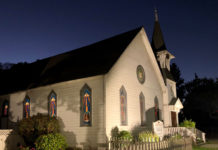Despite society’s exuberance regarding Christmas, Easter is “the greatest and oldest feast of the Christian Church.” This ancient holiday commemorates the resurrection from the dead of Jesus Christ and is the linchpin of a whole series of Christian holy days.
The date of Easter varies every year according to the lunar calendar: It is the first Sunday on or after the first full moon of spring, which occurs between March 22 and April 25 each year. Thus, all the important events associated with Easter move through the calendar accordingly.
First to herald the approach of Easter is a day known variously as “Mardi Gras” (Fat Tuesday), “Carnival” (Goodbye meat) and “Shrove Tuesday” (Confession Tuesday). The next day begins Lent, a season associated with disciplined preparations for Easter. Foods have been a common luxury to give up; butter, meat and eggs were traditionally high on the list to avoid. With no refrigeration and few preservatives in the Middle Ages, this food was often used up in a final gala event before Lenten restriction. Thus began the party-like celebrations we associate now with this Tuesday.
The following day, Feb. 13 this year, is Ash Wednesday, which begins the solemn season of Lent (an old word meaning “spring,” referring to the lengthening of days). The key feature of Ash Wednesday is the ashes used in worship that day, the clergy smudging a cross shape on the foreheads of the faithful. Ashes are a traditional biblical symbol of mortality, death and sorrow.
The following days of Lent are traditionally marked by extra discipline among participants: giving money to charity, studying the Bible, increasing prayer, fasting and abstinence (limiting consumption of food). Some churches use this time to prepare adults for initiation into the church through the sacraments of baptism, confirmation and communion at Easter.
There is some controversy among various Christian bodies about how to count the 40 days of Lent. Forty is a symbolic number in the Bible (for example, 40 years in the wilderness for Moses, 40 days and nights of rain on Noah’s ark, Jesus’ 40 days in the wilderness).
• Many churches count Ash Wednesday through the Saturday before Easter as 40 days, subtracting the Sundays, which are traditionally “feasts.”
• Roman Catholics don’t include the the final three days before Easter, “The Triduum,” as part of Lent but as a separate liturgical season observed with special rituals.
• Eastern Orthodox Christians, following the ancient Julian calendar, begin observance of their own Great Lent on March 18 this year, known as “Clean Monday” or “Green Monday.”
In Morgan Hill, two congregations will follow a long-standing tradition by worshipping together on Ash Wednesday, using the rite of the Episcopal Book of Common Prayer. Parishioners of St. John the Divine Episcopal Church will gather at Advent Lutheran Church (16870 Murphy Ave. in Morgan Hill) at 7 p.m. St. John’s Rector, Father Phil Cooke, will preach the sermon, and Advent’s Pastor Anita Warner will celebrate the liturgy; a reception will follow. Call (408) 779-3551 for more information.
As many as 60 percent of Hollister’s workforce commutes outside of the community, so the local ministerial association has planned a “drive-by” Ash Wednesday observance. Clergy will be available in the parking lot of Abundant Life Foursquare Church (790 Bolsa Road, Hollister) from 5:30 to 7:30 a.m. and 4 to 6:30 p.m. for prayer and imposition of ashes. Call (831) 637-7570 for more information.







